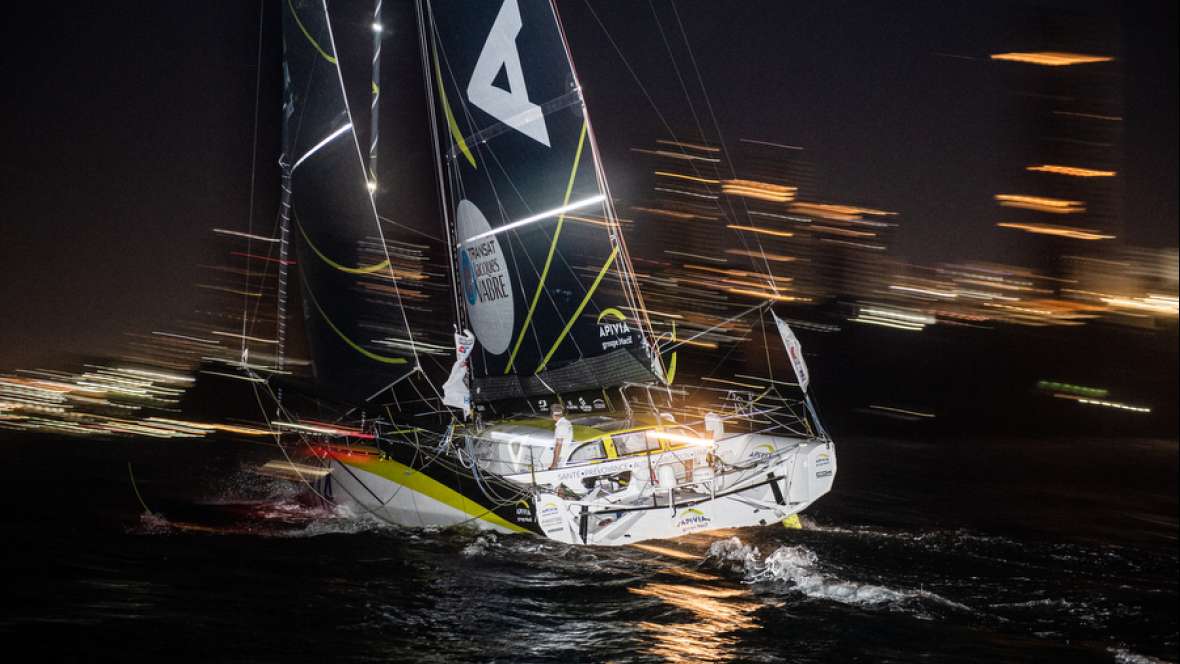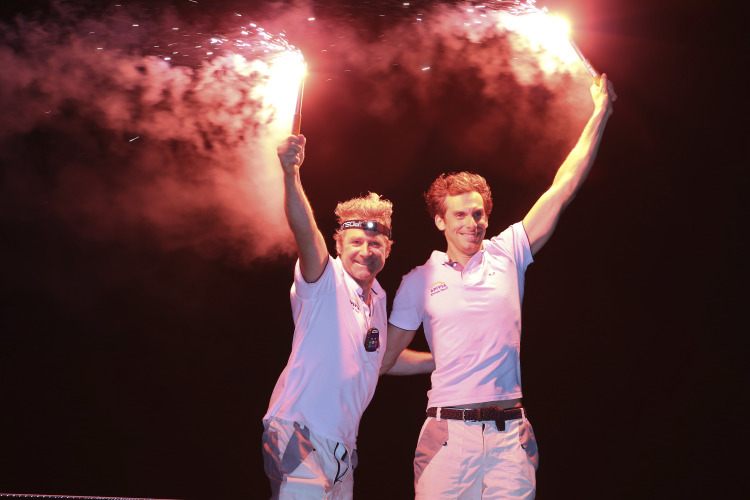The latest race news from the race

© Jean-Louis Carli/Alea
The first analysis, Apivia: "We have 20% of boat speed and maybe more to come"
In the first analysis of the race, as he approaches the finish line in the Bay of All Saints, Charlie Dalin, the 35-year-old skipper from Le Havre, talks about what he's learned from his second Transat Jacques Vabre Normandie Le Havre and his co-skipper Yann Eliès, why they were shocked by Charal parking up in the Doldrums, and why there's at least 20 per cent to come from his new foiler ...
Are you enjoying yourself?
"Am I having fun? Yes, I am indeed. These boats are fun to sail compared to all my years in Figaros. You don’t sail Figaros for the fun of the boat, more for the tactics, strategy and trying to improve your sailing level. Here, the IMOCAs are performance boats and at the top of what you can do with a monohull. I’m still amazed at how fast we can sail. Right now, I’m sailing at 22 knots, answering your questions in 16 knots of breeze. It’s just crazy."
You sent a great and very generous video of Charal passing you at great speed before the Doldrums, did you achieve acceleration like that? What percentage of the boat’s capability do you think you have achieved?
"I believe our top speeds are not the same as Charal, the boat was not intended for top speeds but more for average speeds, and also for going fast easily in any type of conditions. It’s true for double-handed but even more for single-handed sailing, you have to have a versatile boat and a boat which can reach acceptable speeds fairly easily. If you just fall out a bit from the range of your sail or sail trim, it’s important that the boat keeps going fast because you can’t manoeuvre as much as if you were fully crewed. Apivia is boat that is intended for optimising the average speeds across the Atlantic or around the world."
"Regarding the percentage of what we explored on the boat. Even though I just said you can achieve acceptable speed when you work on trimming, plus your foil rig, plus your keel angle; everything added (together) makes you able to sustain, or not, foiling mode when it’s possible. I think we still have a lot to…we know the potential of the boat is still…maybe we have 20% of boat speed maybe more that is still achievable when the foil starts lifting the boat.
"With time we will be able to foil sooner and we’ll be able to sustain foiling in bigger seas and in more wind angles. We will definitely improve on the edges of the foiling mode and also within the foiling mode because it’s not the same boat anymore, these boats are a bit like multihulls because when the wind picks up the boat just accelerates and tends to nosedive when you have too much sail up. It’s not like a normal monohull, where the boat just leans over when there’s too much wind and doesn’t accelerate. Here, this is really the behaviour of a monohull, if the wind picks up the boat accelerates and you if you have too many sails up, you nosedive, it’s quite impressive."

Was the Doldrums a shock to see Charal stop like that and you fly by?
"We were really lucky to be able to get out of the Doldrums, but then we could the clouds, the squalls, getting closer and closer to us, arriving from the east, and every time we managed to sail just ahead of the clouds and we could see that we were sailing 10-14 knots, but still we were seeing the Doldrums were moving south, we could see that on the weather file. So, that didn’t help the other boats, because they were moving south at the same time as the Doldrums; we were lucky to sail just south of the Doldrums for maybe 36 hours. That was actually really amazing, I will never forget it in my sailing career - just sailing every time, maybe 1 or 2 nautical miles just ahead of every squall and just managing to stay south of the Doldrums, the timing was just perfect."
Jean Le Cam says the 1-hour classement updates make it easier for the hunter in the Doldrums, did you feel like that?
"Yes, he’s probably right in some ways; we could see where Charal was and there was no wind, so that was correlating the theory regarding the little low pressure. But, also, I believe that having the positions normally helps the leaders maybe 90% of the time because you can place your last gybe in a north-east trade according to your competitors, you can see how well they’re sailing; if they’re further west than you, you can rapidly see if you’re going to be able to hold the position or not. In this case maybe it wasn’t useful to be the leader, but to me, for the rest of the time it is more useful to the leaders than the hunters."
How has the partnership with Yann Elies worked? What have you learnt from each other?
"I’ve learned a lot of things alongside Yann in this Transat. He’s definitely an important part of the success of this Transat. He has a lot of experience in this world, with foiling IMOCAs as well. I have learned a lot about manoeuvres, trimming and finding the right pace. In terms of how often you change sails or how long it is acceptable to sail with the wrong sails. It is not always easy, when you are just accustomed to change the sail as soon as the angle is not right or the wind speed changes a bit. You cannot do this on an IMOCA because manouvres are time consuming and they take up a lot of energy, so, it’s an art to find the right pace, the right rhythm, in terms of adapting yourself to the changing conditions and always being on the right rhythm.
"Also, he’s done this race many times, so he has experience of the north-east trade winds, the Doldrums and the south-east trades. I’m really happy we sailed together.
I haven’t really thought about what he learned from me…you’ll have to ask him! (laughs)."


